The Monday Charge: August 12, 2024
In a week that tested the mettle of even the most seasoned investors, the stock market exhibited a bout of volatility that, while significant, was far from unprecedented. The Dow Jones Industrial Average kicked off the week with a quadruple-point drop on Monday

The biggest movers last week on price and volume (Large Cap S&P 500)
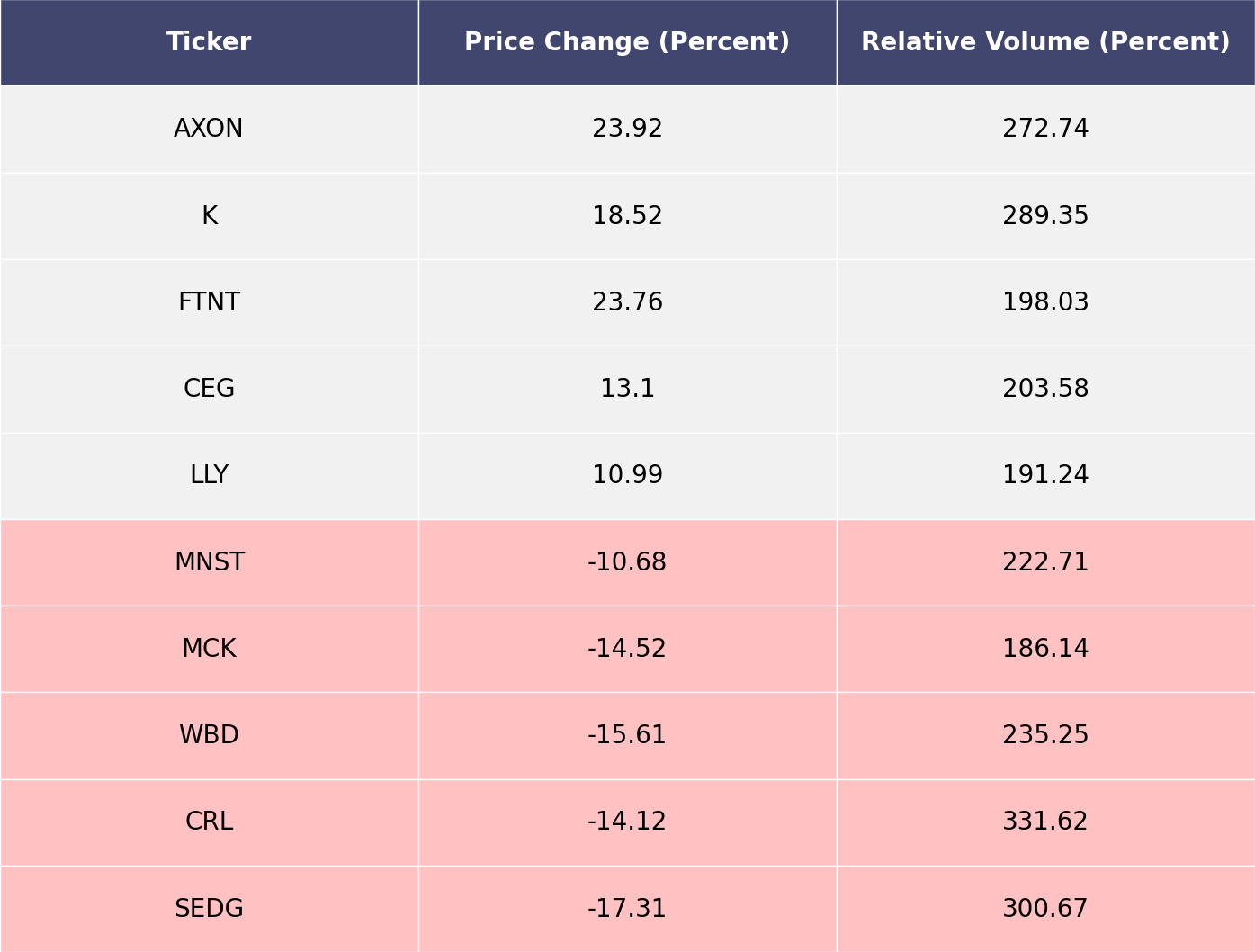
Price and volume moves last week for every stock and sector (Large Cap S&P 500)
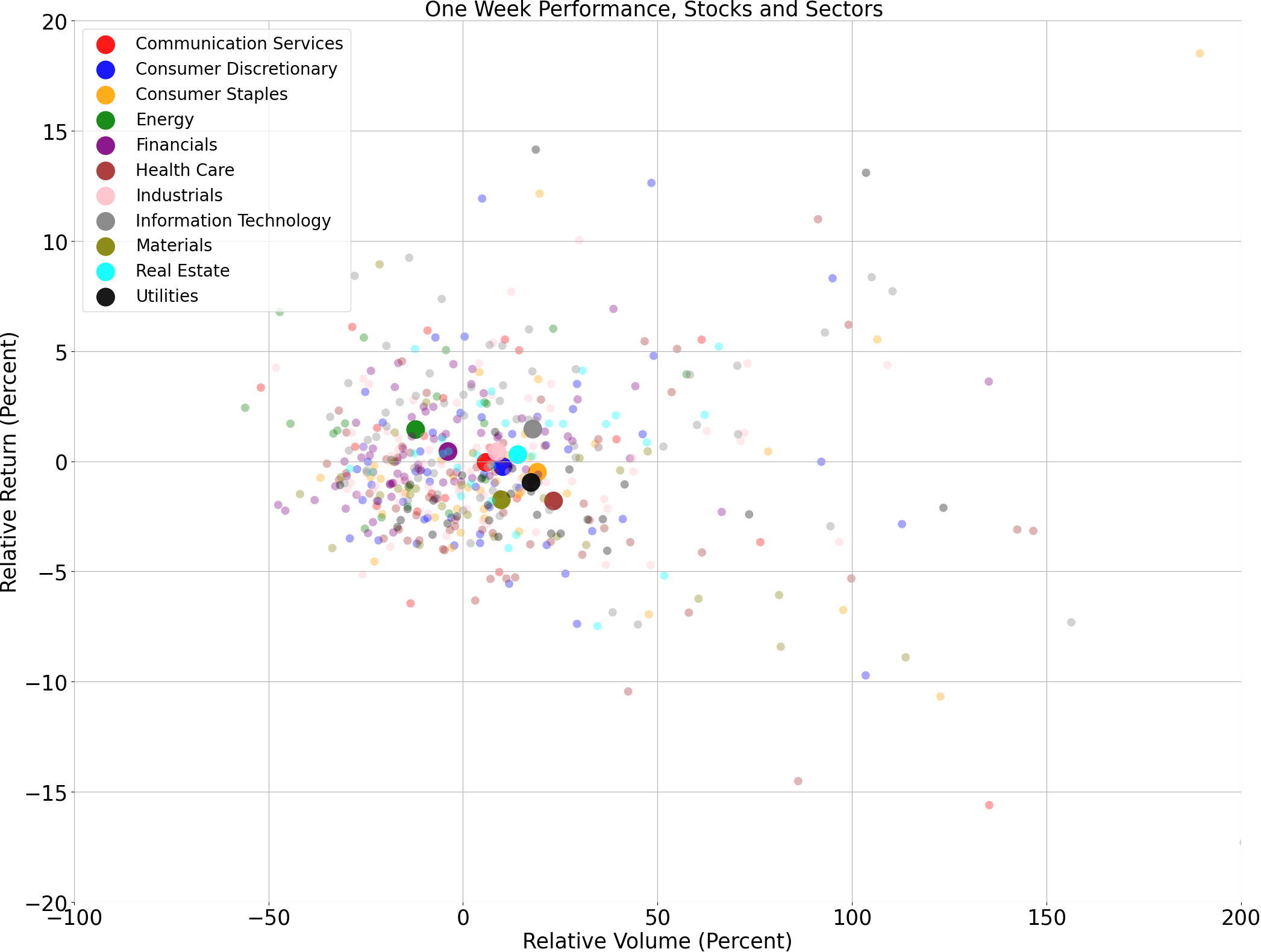
A technical analysis across indices
S&P500
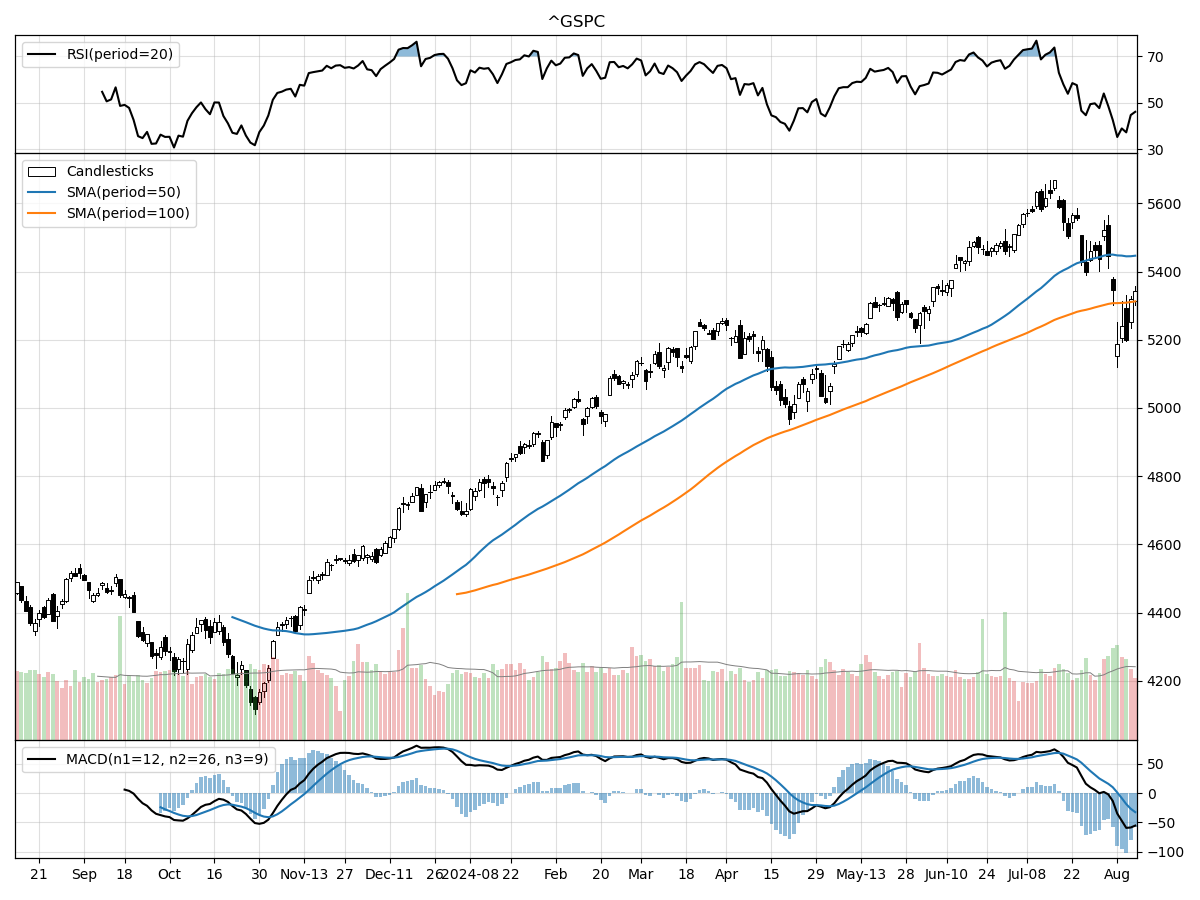
Nasdaq
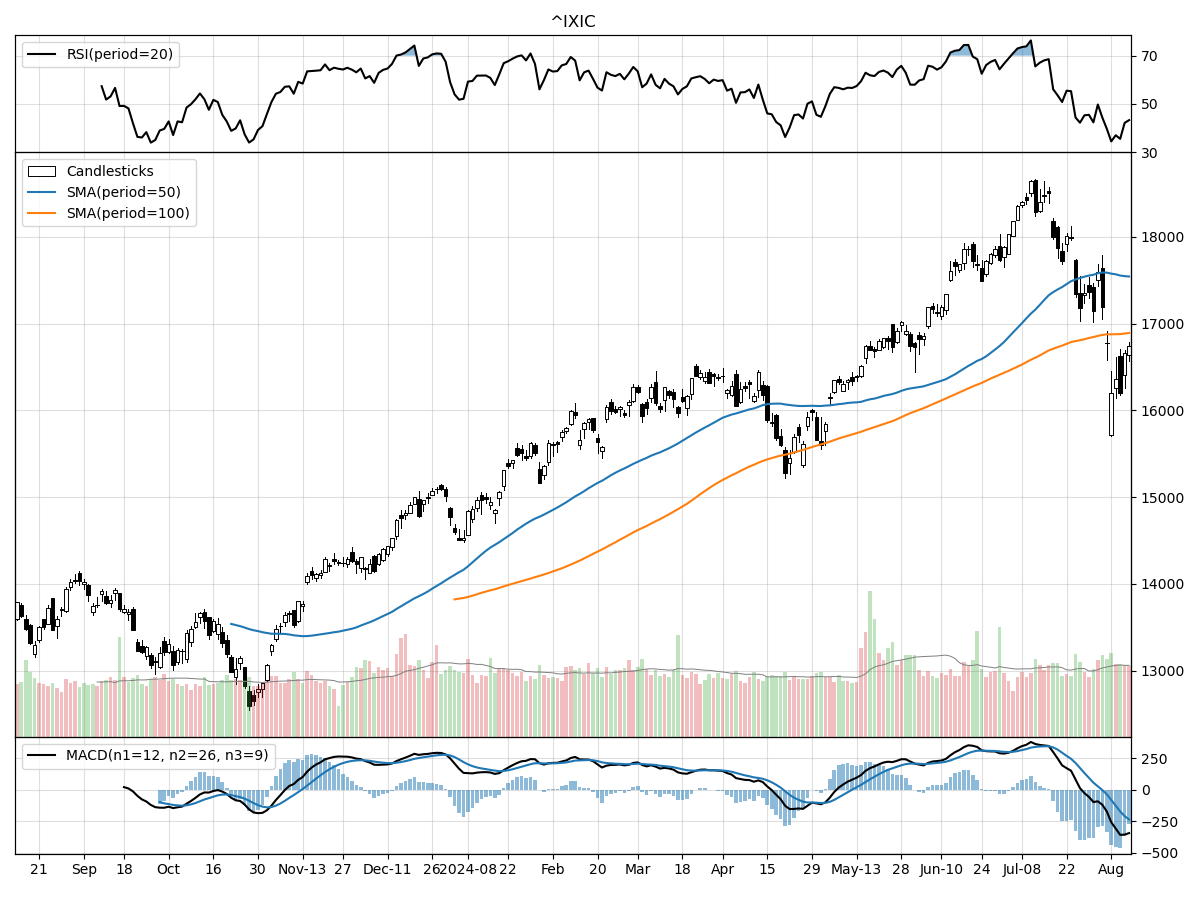
Russell 2000
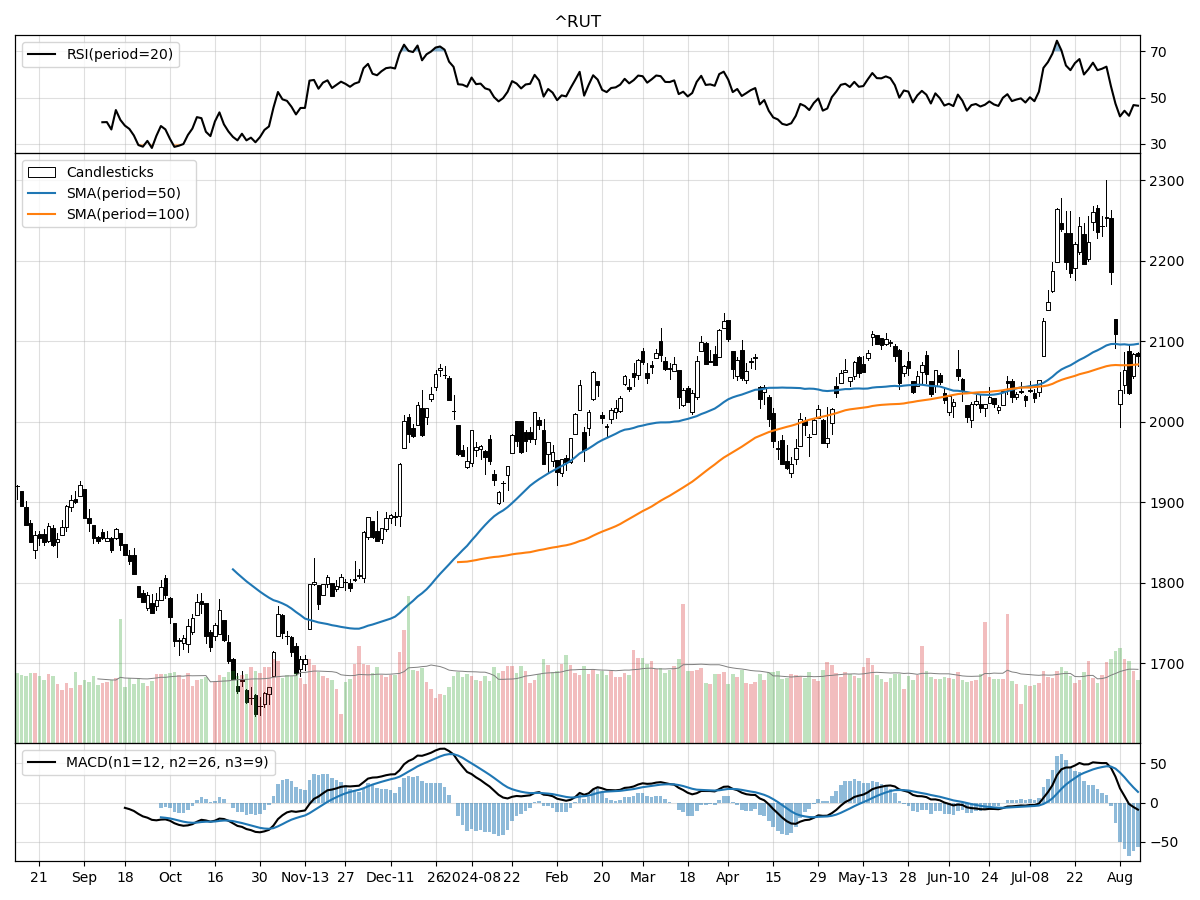
Analyzing the technical performances of the S&P 500, Nasdaq, and Russell 2000 indices reveals some interesting contrasts and similarities. Starting with the S&P 500, it currently stands 29% above its 52-week low and 5% below its 52-week high. This index has experienced a minor decline of about 5.1% over the past month and has remained relatively stable over the last three months. Despite this stability, money flow indicators suggest that the S&P 500 is under moderate selling pressure and distribution, with a bearish MACD at -32.4, signaling potential downward momentum.
On the other hand, the Nasdaq index exhibits a slightly different profile. It is 32% above its 52-week low but 10% below its 52-week high, indicating a more substantial distance from its peak compared to the S&P 500. The Nasdaq has suffered a more pronounced decline of 9.35% in the past month, while maintaining stability over three months. Similar to the S&P 500, the Nasdaq is also under moderate selling pressure and distribution, with a significantly bearish MACD at -236, highlighting stronger bearish momentum.
Contrastingly, the Russell 2000 Small Cap index shows a bit more resilience. With its current price 27% above its 52-week low and 8% below its 52-week high, the Russell 2000 has managed to remain relatively stable over both the last month and the last three months. Despite the moderate selling pressure and distribution indicated by money flow indicators, the Russell 2000 stands out with a bullish MACD at 13.58, suggesting a potential upward momentum in the near term. This positive MACD contrasts with the bearish indicators seen in the S&P 500 and Nasdaq, potentially making small-cap stocks a more attractive segment in the current market climate.
Last week vs. history (Large Cap S&P 500)
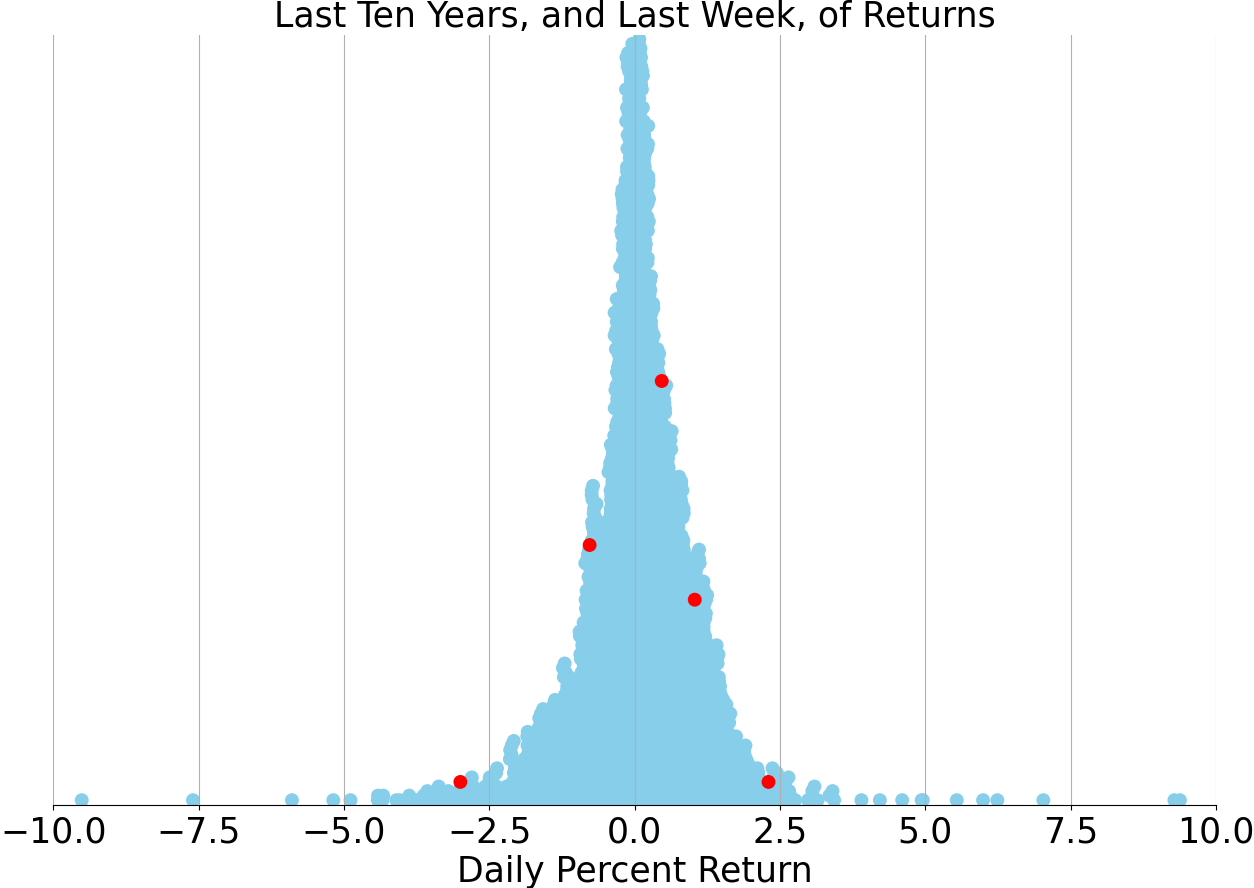
Market Commentary
In a week that tested the mettle of even the most seasoned investors, the stock market exhibited a bout of volatility that, while significant, was far from unprecedented. The Dow Jones Industrial Average kicked off the week with a quadruple-point drop on Monday, sending ripples of concern through financial markets and prompting a flurry of "market sell-off" headlines. However, the subsequent days saw a series of sharp daily gains, culminating in a modest overall change for the week. Despite the alarming headlines, the market's performance was not as dire as initially perceived.
Such market fluctuations, though unsettling, are not uncommon and should be approached with a sense of perspective. The recent decline, while abrupt, started from an all-time high, underscoring the inherent volatility of financial markets. Historical data reveals that the Dow's decline was only the 12th largest in history, a reminder that larger drops have been weathered before. Investors would do well to remember that market corrections, while uncomfortable, are often part of broader upward trends.
Looking at the bigger picture, the S&P 500 index over the past four years illustrates the long-term gains achievable by staying invested through short-term volatility. The recent pullback, when viewed in the context of this broader timeline, appears much less significant. This perspective is crucial for investors aiming to navigate and potentially benefit from market declines. Staying the course, rather than succumbing to panic, often proves to be a more fruitful strategy.
Interestingly, the bond market provided a cushion against the stock market dip. As stock prices fell, bond prices rose, and interest rates dropped, offering a buffer for diversified portfolios. This interplay between stocks and bonds highlights the importance of a well-rounded investment strategy. Diversification, as always, remains a key principle in mitigating risk and smoothing out returns over time.
Pullbacks in the market, ranging from 5% to 10%, are not unusual and typically occur every year. The recent decline marks the third such instance in the past year, with the previous two rebounds occurring swiftly. Historical patterns suggest that these dips are often short-lived, with the market recovering and reaching new highs within an average of 63 days for 10% corrections. This resilience underscores the importance of maintaining a long-term investment horizon.
Data supports the notion that staying invested through market dips can be beneficial. Following initial declines, the S&P 500 has typically shown positive performance over the subsequent six months. This pattern reinforces the case for remaining calm and invested, rather than making hasty decisions based on short-term market movements. Patience, it seems, is often rewarded in the world of investing.
As we look ahead, important economic data is set to be released, including retail sales and key inflation readings such as the Producer Price Index (PPI) and Consumer Price Index (CPI). These indicators will provide further insight into the economic landscape and potential market direction. Investors should keep an eye on these developments while maintaining a balanced and informed investment strategy.
Craig Fehr, a principal and leader of investment strategy at Edward Jones, emphasizes the importance of understanding economic trends and market conditions. His analysis and guidance are designed to help investors achieve their financial goals amidst the ebb and flow of market movements. Fehr's perspective is a valuable reminder that informed, strategic investing is the key to navigating volatile markets.
In conclusion, while the recent market volatility may have rattled nerves, it is essential to maintain perspective and focus on long-term objectives. Market declines, though uncomfortable, are a natural part of the investment landscape and often pave the way for future gains. By staying diversified, informed, and patient, investors can weather short-term storms and emerge stronger on the other side.
Stock study for Tuesday
The Walt Disney Company operates in three major segments: Entertainment, Sports, and Experiences. The company places a strong emphasis on human capital management, focusing on attracting, developing, and retaining high-quality talent through diverse programs and initiatives, including health and wellness benefits, diversity and inclusion, and talent development. With a global workforce of around 225,000 employees, predominantly full-time and significantly unionized, Disney’s Entertainment segment is a substantial revenue driver. This segment includes linear networks like ABC and Disney channels, direct-to-consumer (DTC) services such as Disney+ and Hulu, and international television channels. New areas poised to drive future revenue growth include the expansion of DTC streaming platforms and sustainability initiatives aimed at mitigating environmental impacts.




Comments ()